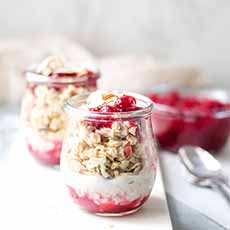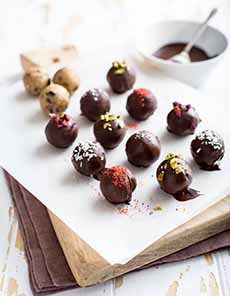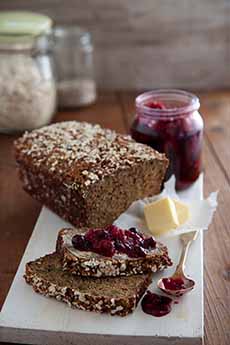PRODUCT REVIEW: Flahavan’s Irish Oatmeal
|
|
This morning, St. Patrick’s Day, we breakfasted on a bowl of oatmeal made with Flahavan’s Irish Rolled Oats. We breakfast on Flahavan’s many mornings. The creamy oatmeal, ready in 3 minutes in the microwave (no stirring!), is hearty comfort food with a bonus: fiber. It’s become our oatmeal of choice, significantly tastier with a better texture than the leading American brand. In Ireland, Flahavan’s—which dates to 1785 and remains family owned—is the number-one brand. The U.S. line includes: Steel cut oats take considerably longer than rolled oats to make, but deliver a firmer texture (it’s a great texture) and a slightly nutty taste. Flahavan’s have been milling quality oats at the family mill for more than 200 years. A unique milling process cooks the oats twice, then carefully rolls them to retain their distinctive texture and deliciously creamy taste. Irish steel-cut oatmeal is made differently than regular oatmeal. Instead of the groats (the inner kernel with the inedible hull removed) being rolled, the kernels undergo a steel-cut process. Using giant steel blades, the groats of whole oats are chopped into two or three pinhead-sized pieces. Rather than being flattened, the oats retain their shape (albeit, having been cut, they’re a smaller size than rolled oats). Steel-cut oats are also called pinhead oats, coarse oatmeal (in the U.K.), or Irish oatmeal. In addition to a hearty porridge, Flahavan’s oats can (and should!) be used to make: Oats are an ancient grain with a long history of sustenance. Hunter-gatherers ate wild oats as far back as 32,000 years ago—long before farming began, some 12,000 years ago. It was one of the first cereals cultivated by man. Evidence of growing oats in China dates far back as 7,000 B.C.E. The ancient Greeks are believed to be the first to make porridge from oats. The Romans followed the Greeks in cultivating oats and introduced them to other countries as they conquered Western Europe. They named oats and other crops “cereals” after Ceres, the Roman goddess of agriculture. In Ireland and elsewhere, most households held stores of oats to use for bread, porridge, and as a key ingredient for making black pudding (blood pudding), a type of blood sausage. Made from pork blood, with pork fat or beef suet, and oatmeal, oat groats or barley groats. It was a staple in the Irish and English diet. Up until the 1800s, the milled oats were a coarser grain than the oats we know today. The Industrial Revolution enabled machine milling, which produced finer oats. In the 19th and 20th centuries, porridge became a more popular breakfast dish. Oatmeal for breakfast was promoted by the oatmeal producers like Flahavan’s. Tastes change over time and porridge is now mostly made with the finer-milled oat-flakes we all have in our kitchen cupboards [source]. Since 1785, the Flahavan family mill has stood on the banks of the River Mahon, just outside the village of Kilmacthomas in County Waterford. (The House of Waterford Crystal is located in the same county, in the city of Waterford, Ireland, a Viking city built in 914 C.E.) It’s one of the most beautiful parts of Ireland, covered in lush, rolling farmland. Oats have grown for as long as anyone remembers. The land and weather in the sunny southeast of Ireland are perfect for growing them. The mill was long powered by a water wheel on the River Mahon. The original water wheel is still there, but its function has been replaced by a water turbine that produces green electricity to run the mill. As part of its sustainability mission, a wind turbine and solar panels generate additional electricity. Over the years, many of the recipes on the website were created in the family kitchen by Mary Flahavan, wife of John Flahavan, the current owner. Both take great pleasure, knowing that the recipes are enjoyed in homes all over Ireland, and around the world. Oats are timeless, natural, wholesome, and nourishing, and at Flahavan’s, sustainable. Who could ask for more? |
|
|
|
||






